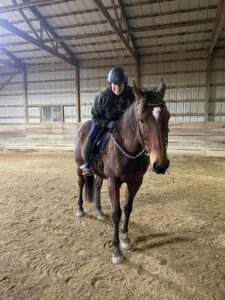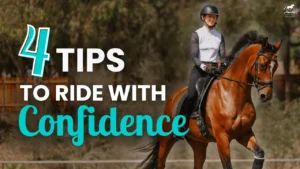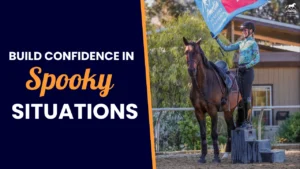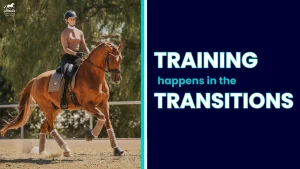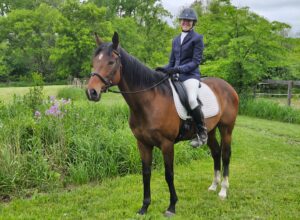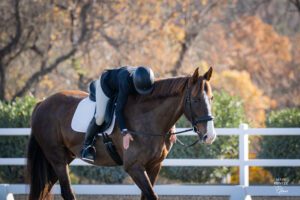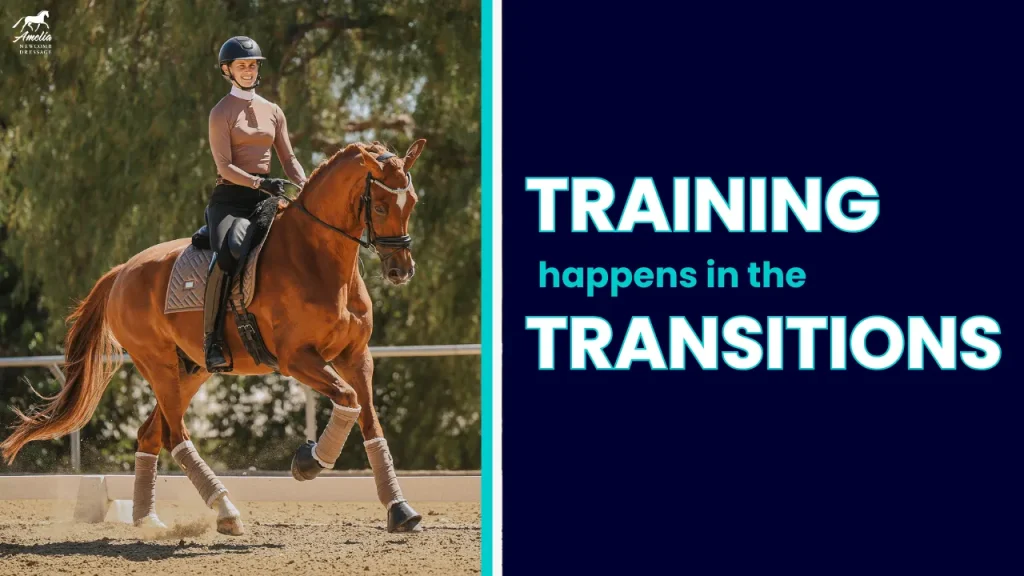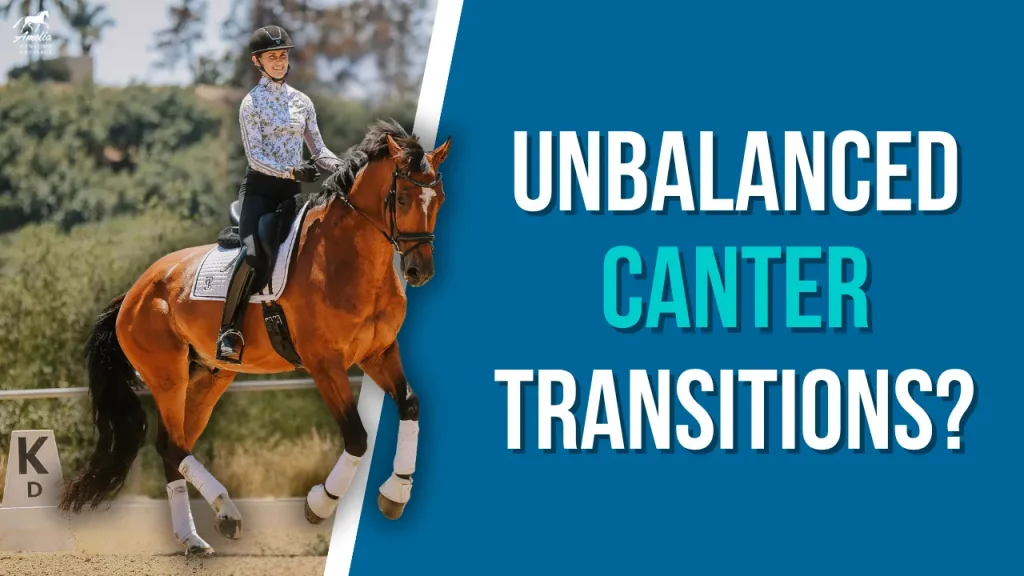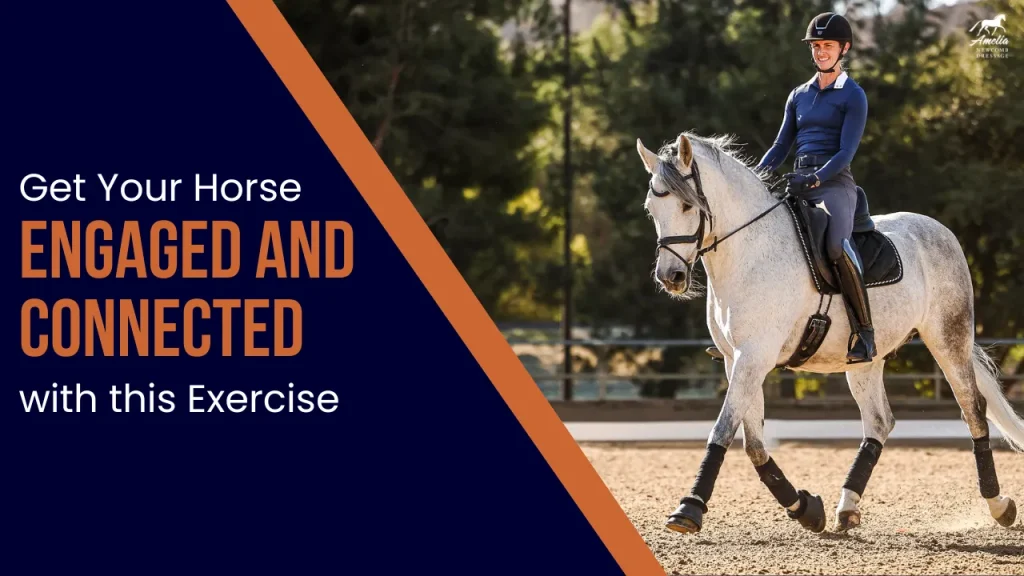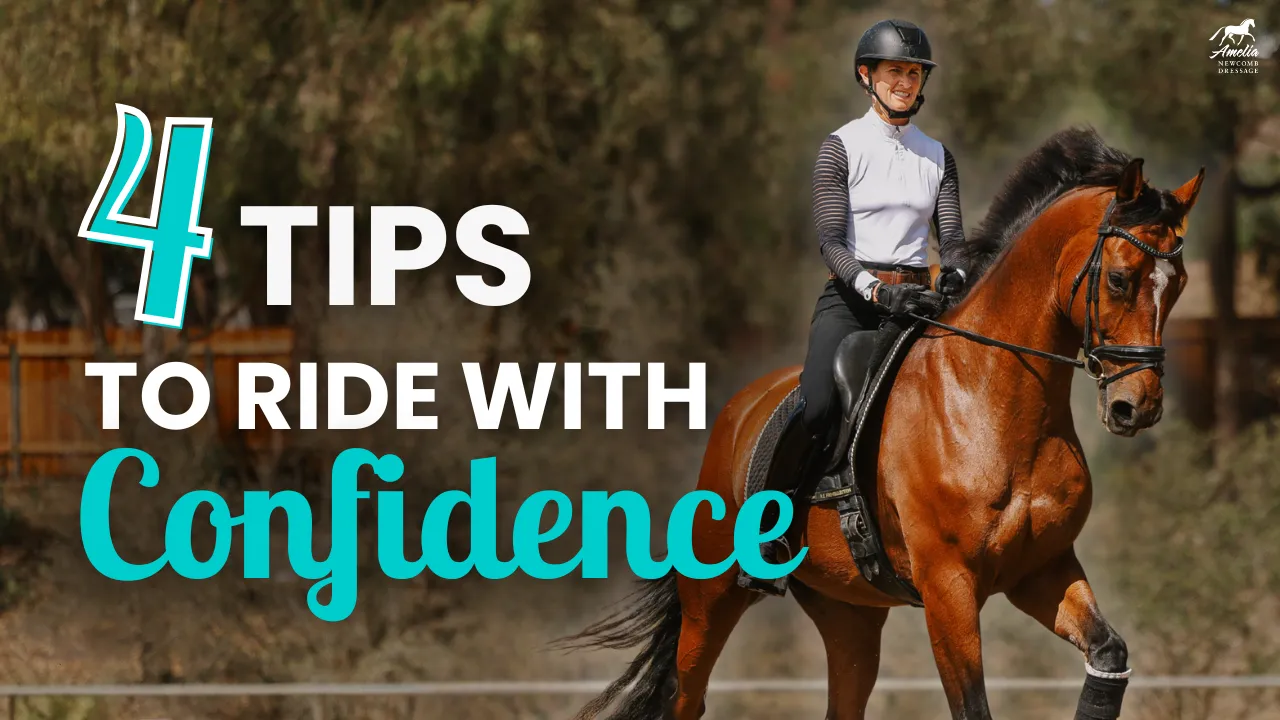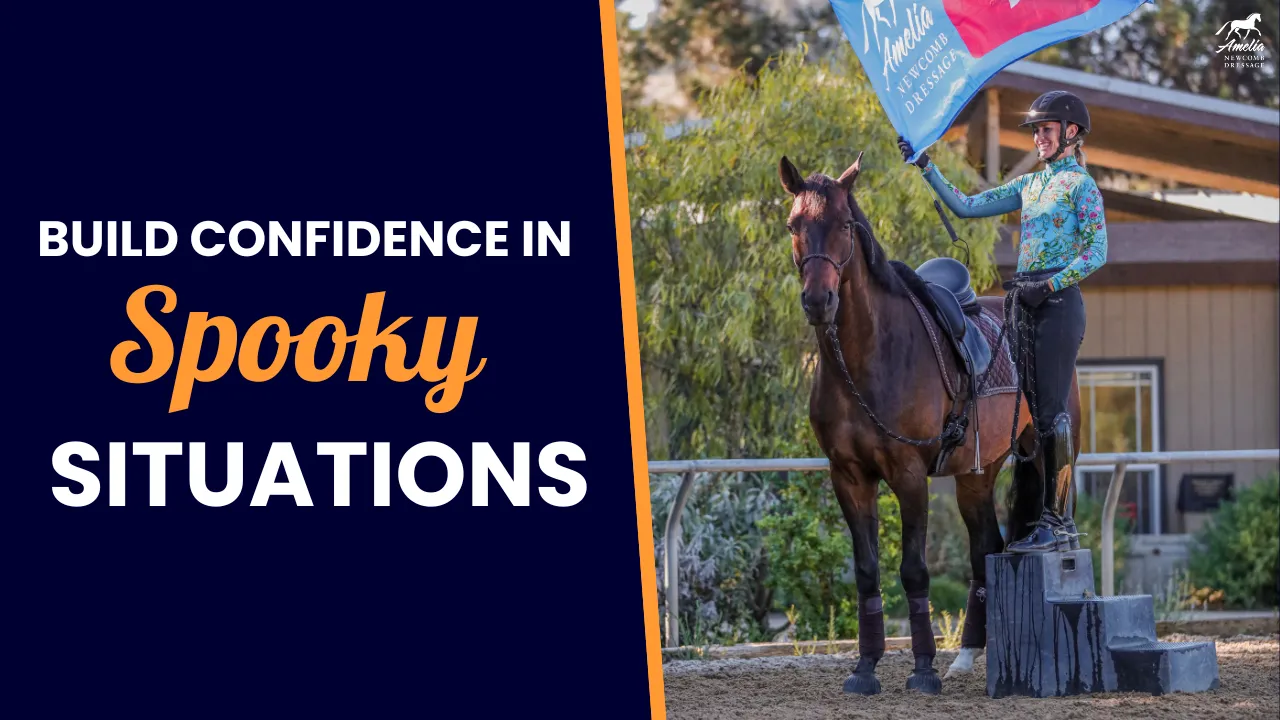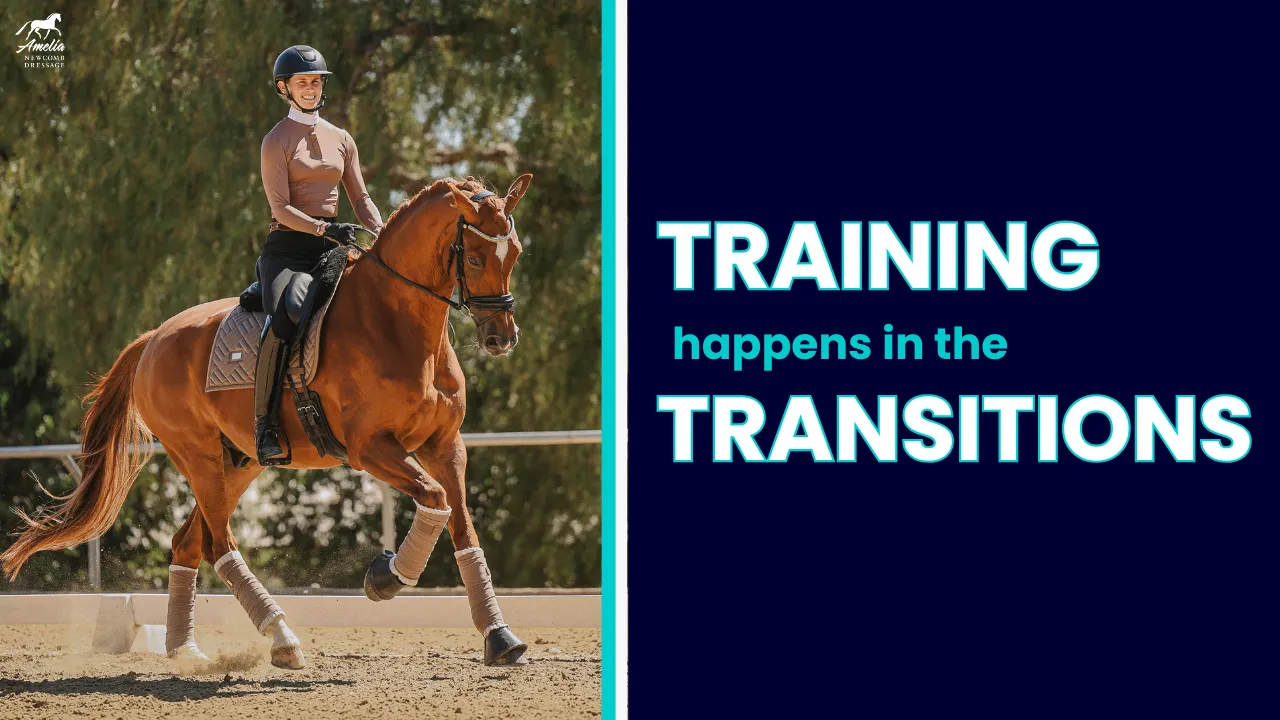Transitions are an invaluable tool for helping to make your horse more reactive to your aids. They help improve your horse’s responsiveness, engagement, and focus, ensuring they stay sharp and attentive throughout your ride. Here’s how transitions can help and tips for incorporating them effectively:
Why Transitions?
Transitions are more than just a change in gait—they’re about building communication and responsiveness between you and your horse. When done correctly, transitions:
- Encourage forward thinking: A horse that anticipates transitions stays focused and eager.
- Promote engagement: Shifting between gaits requires your horse to step under with their hind legs, strengthening their connection and impulsion.
- Refine aids: Transitions help you test whether your horse is truly responding to light aids.
Key Transition Exercises
- Trot-Canter-Trot Transitions:
- Start with working gaits to ensure your horse is forward.
- Ask for the canter with minimal effort (just your seat and upper leg). If they don’t respond, give a stronger aid to reinforce the request.
- Return to trot and repeat until the horse responds promptly to lighter aids.
- Walk-Trot-Walk Transitions:
- Establish a steady walk, then ask for trot with a light calf aid.
- If your horse hesitates, reinforce the aid with a quick bump or tap.
- Repeat until the horse transitions smoothly from a gentle cue.
- Within-Gait Transitions:
- Practice increasing and decreasing tempo within the trot or canter.
- This keeps your horse attentive and ready for changes.
Tips for Success
- Consistency is key: Start with a light aid and follow through if needed. Your horse should learn to respond to the initial cue.
- Stay unpredictable: Vary your transitions to keep your horse focused and avoid monotony.
- Reward good responses: A quick scratch or softening of your reins helps your horse understand they’ve done the right thing.
By incorporating frequent, varied transitions into your rides, you’ll cultivate a horse that is more attentive, forward-thinking, and responsive to your aids.
Happy riding!
Amelia
